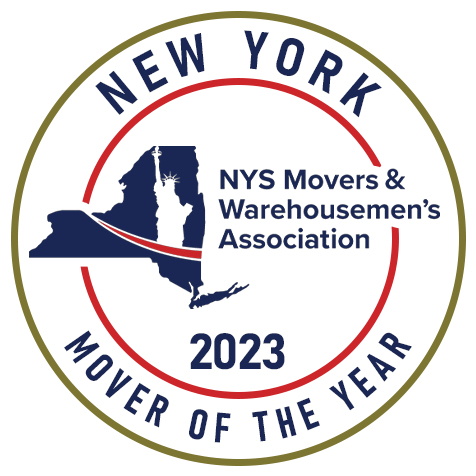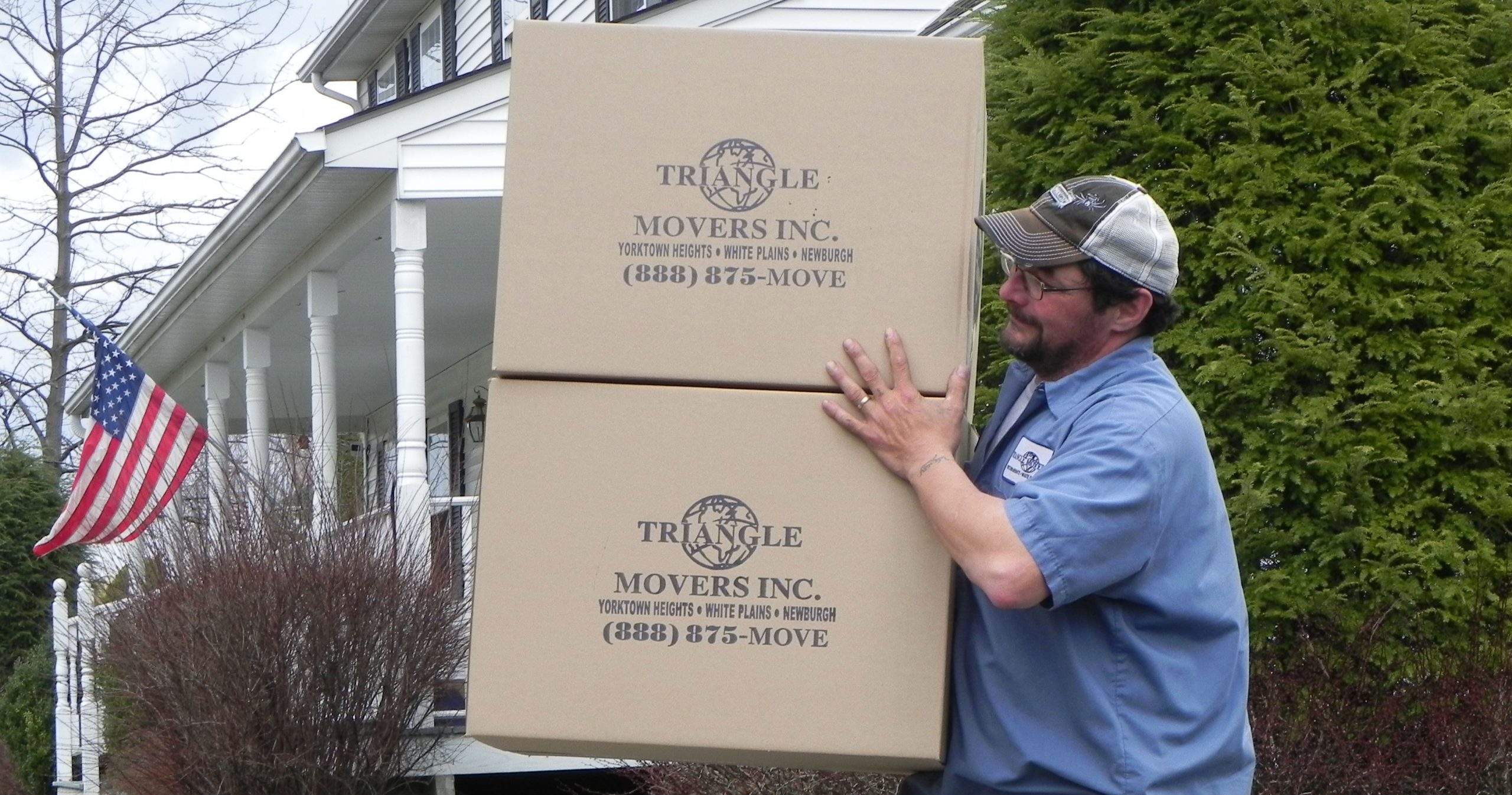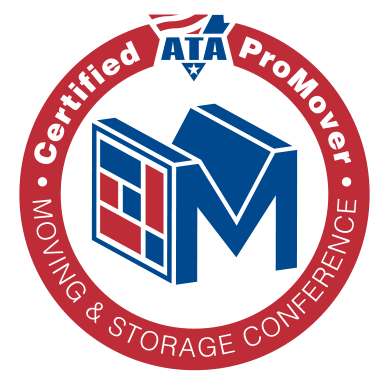Six Tips for Out of State Moves From Hudson Valley
Moving out of state for the first time? Hi, I’m Jack Eschbacher, owner of Triangle Movers and a veteran of the moving industry with over 45 years of experience.
I’ve helped thousands of customers move out and into the state of New York and I’ve noticed there are two keys to making a move seamless: preparation and planning.
In this blog post, I’ll cover a few planning tips that have helped make a difference for our previous customers and are certain to help you prepare for your move.
Tip #1: Start Planning As Early As Possible
Thinking about relocating out of state from the Hudson Valley? Start early. Ideally, two to three months ahead of your anticipated move date. This isn’t just about having enough time to pack all of your boxes. Between changing your addresses and shutting off utilities, the details associated with your move can add up fast.
To add to this, Hudson Valley’s unpredictable weather can throw a wrench in even the most organized timeline. To avoid challenging weather, moving during the summer is generally the easiest time, but also the most busy. Moving in winter is often thought of as the most challenging time to move as snow can make driving or even walking boxes down your driveway dangerous. But moving companies tend to be less busy, so if you need extra help it will be easier to get it.
Keep an eye on the weather about a week ahead of your move date to make sure there isn’t rain in the forecast. Rain isn’t the kind of thing that will outright stop a move, but knowing it’s coming can help you prepare a better strategy for your move day.
Choosing the right mode of transportation can also ease the chaos. Renting a truck gives you maximum control, while, of course, hiring a moving company will completely take the responsibility for your move off your shoulders.
Driving your car? Check your move route on Google Maps ahead of your move day to see if there are any road closures or accidents you may need to avoid. Construction zones and seasonal closures can also be discovered and avoided through a Google search as well.
Begin by creating an outline of your expected moving day, including a detailed checklist. Outline everything from weather and your planned route to mail forwarding and materials you might need for your move, such as packing boxes or a rental moving truck.
Tip #2: Think Beyond the Boxes: Budget Wisely for the Journey Ahead
Costs associated with moving out of state from the Hudson Valley can quickly go beyond just buying packing materials and a rental truck. From New York tolls to hotel stays, the bill adds up quickly when you have a long distance to travel.
Knowing where your dollars are supposed to go before the odometer starts ticking makes all the difference between a smooth transition and last-minute financial surprises.
What Does an Out-of-State Move Typically Cost?
Let’s break it down. An interstate move from Hudson Valley usually includes:
- Fuel: Whether you’re driving a rental truck or your personal car, gas prices fluctuate. Crossing multiple states often means budgeting for $150–$400 in fuel alone.
- Accommodations: Overnight stays en route can run $171-$319 per night according to BudgetyourTrip.com, depending on location and time of year. Always reserve a hotel or motel room in advance, especially if you’re moving in the summer when travel is at its peak.
- Tolls: Exiting the greater New York area comes with a price tag. Expect to pay up to $50–$100 in tolls when leaving via the New York Thruway, George Washington Bridge, or other major routes.
- Meals: On-the-road dining adds up quickly. Build in $25–$50 per person per day that you’re traveling.
Those are just the predictable costs. But what about the ones that sneak up on you?
The Hidden Costs Most People Miss
Some budget items never make it to the spreadsheet until it’s too late. Here are the ones you should never overlook:
- Moving supplies: Boxes, tape, bubble wrap. They’re not free, and the cost of some of these items might surprise you. Buying new packing materials can cost up to $150–$300, depending on volume.
- Storage rentals: If your new place isn’t move-in ready, local storage facilities run $75–$300 monthly for a small unit, according to move.org.
- Insurance for Rental Trucks or Equipment: If you choose to add on insurance for your rental truck to protect you in the case of an accident, options can run between $15-$30.
- Car repairs: Heading to another state could strain your vehicle. Pre-trip maintenance for things like brakes, fluids, tires can cost $200–$800.
Hudson Valley Savvy: Ways to Cut Costs Before the Move
Save and even make some money before your move:
- Move when others aren’t: June through August are high-demand periods for moves. Booking your move between October and April can shave off 15–25% from moving company quotes.
- Host a garage sale: Poughkeepsie, Kingston, and Goshen locals frequently use social platforms to promote weekend sales. If you have less to move it can save you money on how big a truck rental you need or on a moving company.
- Sell furniture online: Hudson Valley’s proximity to the city makes sites like Facebook Marketplace and Craigslist active. Larger items often fetch a fair resale price with city buyers willing to do the pickup.
Start calculating early and revisit the numbers weekly. Has the truck quote changed? Did you forget to factor in pet boarding or school transcript fees? Don’t be afraid to let your plan evolve.
Tip #3: Partner with Movers Who Know Hudson Valley and the Road Beyond
Offloading the task of handling your move to a moving company is the easiest way to remove a ton of stress and responsibility from your shoulders.
But be aware, not all moving companies are built for the complexity of out-of-state relocations. Regional experience can make all the difference in whether your property arrives at your new home on time. So how do you choose the right mover?
Start with Regional Knowledge and Reviews
Moving companies based in Hudson Valley will be most able to navigate your move with confidence, as they will have the most local knowledge.
Whether your home sits along a quiet Catskills backroad or in a bustling town like Poughkeepsie or Newburgh, experienced local crews already understand bridge clearances, toll routes, and seasonal traffic patterns across New York. That knowledge saves hours on moving day when minutes really start to matter.
During your planning phase, always be sure to check into customer reviews for moving companies you’re looking at on platforms like Google and Yelp. Look for consistency in positive feedback from other long-distance move customers, particularly mentions about punctuality, careful handling of items, and professionalism. Few things reveal a mover’s track record better than what other local customers say.
Licensing, Insurance, and Services: No Guesswork Allowed
Here are some of the things you can look for to make sure a moving company is operating within the law and is insured to handle your property.
- Verified Licensing: The mover should be registered with the U.S. Department of Transportation (DOT). Check their DOT number using the FMCSA search tool to confirm authorization for interstate moves.
- Proof of Insurance: Request documentation showing current liability and cargo insurance. This protects your belongings and safeguards your investment.
- Service Packages: Explore what’s included. Do they offer full-service moves? These include packing, disassembly, loading, and unloading. Or are you alright with packing and transporting your own boxes? Choose based on how hands-on you want your movers to be.
Choosing an experienced moving company helps you eliminate uncertainty before the first box gets taped. Want to avoid mid-move surprises? Start by choosing teams that are already familiar with your area.
Tip #4: Master Packing and Organization from the Start
No one gets to moving day and says, “I wish I waited longer to start packing.” Early organization doesn’t just prevent chaos; it makes every step smoother.
Color Coding and Labeling Boxes
Start by developing a sorting system. Grab colored tape or markers and assign one shade per room. Blue goes with the bedroom, green for the kitchen, and so on. Every box gets a color, a room label, and a quick list of what’s inside.
Next, build a spreadsheet either physically or with an application like Microsoft Excel or Google Sheets. One tab per room, one line per box. Log the box number, what’s in it, and any notes like “Open first” or “Fragile.” Add a checkbox for when it’s been unpacked on the other end of your move and make sure everything has arrived safely.
Packing Smart for the Journey and the Season
Moving out of state from Hudson Valley in, say, January? Plan for ice! The SnowBrains warns “the Northeast remains prone to sharp cold snaps and heavy storms.”
Plastic bins with sealable lids outperform cardboard during wet or freezing weather. Wrap electronics and books in plastic bags before boxing them to protect your items in case moisture sneaks through your packaging.
Layer dry towels between fragile items for extra insulation and padding.
If the forecast predicts freezing rain on moving day, make sure to have some rock salt and a shovel in your car in case you need to dig yourself out of a situation on the road.
Pack for Your Lifestyle, Not Just Your Destination
If there’s anything you might want to do or any items you might need immediately when you reach your new home, pack that gear into a “first day” bag.
Think: What could make your first weekend in a new state feel like home? Those items should stay close at hand in a backpack or suitcase so you can get them easily.
Tip #5: Sort Out Your Legal Docs and Change That Address
Legal red tape can drag out a move if it’s not handled right, especially when you’re leaving New York. While packing up your home in the Hudson Valley, make room on your checklist for a few must-do administrative tasks.
Start With the USPS
Let’s start with the basics first. File a change of address with the United States Postal Service online at moversguide.usps.com. You’ll be prompted to input your old and new addresses and select a start-forward date. This step ensures your mail begins arriving at your new door, and it only takes about five minutes.
Notify Banks and Subscription Services Next
Switch your billing address with your:
- Banks and credit card providers
- Streaming services like Netflix, Spotify, Hulu, etc.
- Monthly subscriptions such as food boxes, magazines, or pet supply deliveries
This prevents billing errors, service interruptions, and potential fraud alerts from unfamiliar transaction locations.
The DMV. Don’t Skip It
If you’re saying goodbye to New York plates, there are a few DMV steps to complete before you cross state lines.
- Surrender New York plates: New York law requires that you return vehicle plates to the DMV when you move out of state. Do this in person or mail them to your local office with a completed Plate Surrender Application (MV-664.1).
- Cancel your registration: You can do this at the same time. This prevents penalties or property tax notices down the line.
- Update your driver’s license: Once you’re in your new state, check that state’s DMV site to transfer your license. Most require this within 30 to 60 days.
Health Insurance: Alert Your Provider
Doctors, clinics, and coverage options often differ across state lines. Call your insurance provider and report your move to ensure uninterrupted coverage.
If you’re using the New York State of Health marketplace, moving out of New York qualifies you for a special enrollment period in your new state.
Don’t Lose Your Vote — Update Registration
Head to nass.org/Can-I-Vote to find your new state’s voter registration deadlines and forms. Most use your new driver’s license and address to verify your eligibility, so it’s tied closely to DMV updates.
Handling these tasks while still in the Hudson Valley will save you from paperwork headaches once you’ve unpacked. Done right, you’ll land in your new home with your mail delivered, your ID valid, your car legally registered, and your new life ready to begin
Tip #6: Settle In Smoothly: Your Personal Roadmap to Feeling at Home
Moving out of Hudson Valley brings a shift in rhythm. Quiet mornings with mountain views give way to unfamiliar skylines, new faces, and the unknown.
How do you bridge the gap between old comfort and a fresh start? It all comes back to your plan, but this time not for boxes, but for your life.
Jump Into Your New Community
Let curiosity lead the way. Don’t wait to feel settled before you engage; engagement speeds up the feeling of belonging. Start local:
- Attend neighborhood events like farmers’ markets, street fairs, and music nights. These gatherings reveal the vibe of the town and bring real connections fast.
- Find your go-to coffee shop or café. Returning to regular places builds routine and puts you in touch with familiar faces.
- Volunteer your time. Whether it’s at a food bank, community garden, or library fundraiser, the act of giving links you directly to people who care about the same place you now call home.
- Hit the trails. If the Hudson Valley spoiled you with the Catskills or the Shawangunk Ridge, seek out nearby nature. Apps like AllTrails can point you to hikes that match your skill level and terrain preferences.
New City, New Services
Life runs on relationships, especially practical ones. Within the first few weeks, lock in your essentials:
- Find a primary care provider and dentist. Use your insurance portal and check reviews, but don’t underestimate local Facebook groups or Nextdoor for honest recommendations.
- Locate a trusted mechanic, dry cleaner, and, yes, hairdresser. These spots often double as unofficial neighborhood HQs for good tips and conversation.
- Transfer your gym membership or join a yoga studio, climbing gym, or running club. If you left a group back in the Hudson Valley, many nationwide chains like YMCA or Orangetheory offer easy transitions.
From Hudson Valley Charm to the Next Chapter
Leaving towns like Goshen, Beacon, or Capitol Hill often means losing out on walkable streets, rolling hills, indie bookshops, and thriving art scenes. Yet many small towns across the U.S. echo those same energies, especially those that orbit major cities.
As you explore your new town, ask this: What are the Hudson Valley equivalents here? Where do artists show their work? Where can you hike and still be home for dinner? These comparisons help zero in on replacements that make you feel at home.
Start Living, Not Just Unpacking
Your boxes will get unpacked eventually. But your sense of home builds faster when you shake hands, say hello, and intentionally stake your place. So what’s the first event on your new calendar?
Conclusion: Ready to Hit the Road? Here’s Your Hudson Valley Move Wrapped Up
Relocating from the Hudson Valley to another state can feel like standing on the edge of a big leap; it’s part adrenaline but also part logistics. It’s a rare blend of excitement and mental to-do lists that never seem to end. But here’s the thing: with a clear plan and smart steps, that cross-state journey transforms into a manageable, and even rewarding, adventure.
Each one of the six tips above will help you lay the groundwork for a smoother, more confident move. From setting the right dates on your calendar to lining up your packing strategy well before moving day, every detail counts.
Your plan works as your moving GPS. Ignore it, and you might hit unexpected detours. Follow it, and before you know it, you’ll find yourself all the way to your new doorstep, ready to start the next chapter of your life.

















